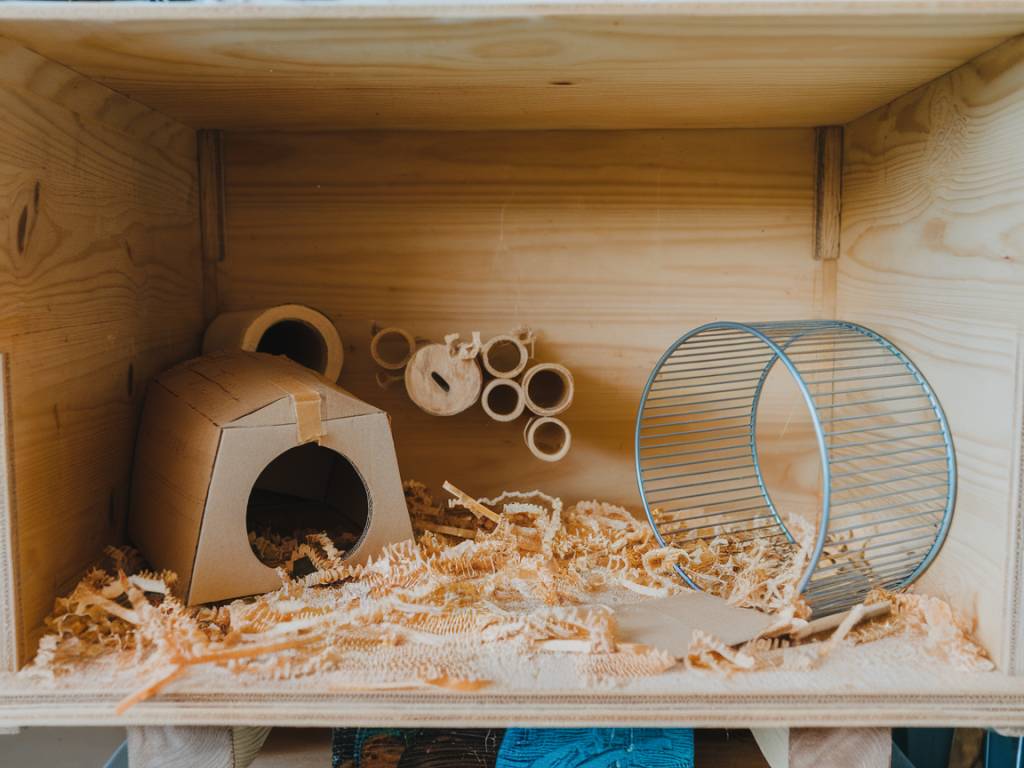Creating a safe and enriching habitat for your pet hamster is essential to ensure their well-being, happiness, and longevity. These small, furry creatures might not demand as much attention as a dog or cat, but they do have specific needs that must be met. To provide the best home for your hamster, you need to consider their housing, diet, environmental enrichment, and overall safety. Let’s delve into each of these areas to create the perfect habitat for your little companion.
Choosing the Right Habitat
The first step in creating a safe environment for your hamster is selecting the right habitat. Hamsters are active animals and need plenty of space to explore. A common mistake is housing them in cages that are too small, which can lead to stress and health issues.
- Size Matters: Choose a cage that’s at least 360 square inches of floor space. Bigger is always better, and multi-level cages can add vertical space for your hamster to climb and explore.
- Ventilation: Ensure the cage has adequate ventilation. Wire cages offer good airflow, but they should have a solid base to prevent your hamster from standing on wire, which can injure their feet.
- Material: While wire cages are popular, they must have closely spaced bars to prevent escape. Glass aquariums are another option, keeping in mind that proper mesh tops are necessary for ventilation.
Substrate and Nesting Material
The substrate and nesting materials you choose are critical for your hamster’s comfort and health. These provide a medium for burrowing, which is a natural hamster behavior.
- Choosing the Right Bedding: Opt for paper-based bedding or aspen shavings. Avoid cedar and pine shavings as the aromatic oils can harm your hamster’s respiratory system.
- Nesting Material: Provide soft, unscented tissue or commercial nesting materials specifically designed for hamsters. Avoid cotton wool or fluffy bedding, which can cause digestive problems if ingested.
- Depth: Provide at least 3-4 inches of substrate, so your hamster can satisfy its natural burrowing instincts.
Hamster Nutrition and Diet
A balanced diet is paramount to your hamster’s health. While commercial pelleted diets can form the basis of a hamster’s diet, they should also have a mix of other foods.
- Pelleted Diet: A high-quality commercial pellet should make up the majority of your hamster’s diet. This ensures they receive essential nutrients.
- Fresh Foods: Provide small amounts of fresh fruits and vegetables. Safe options include carrots, cucumbers, apples, and broccoli. Always wash produce thoroughly and remove any uneaten portions to prevent spoilage.
- Treats: Offer occasional treats like nuts or seeds. Be mindful of portion sizes to avoid obesity.
- Water Supply: Ensure fresh water is always available via a water bottle with a sipper tube. Change the water daily to keep it fresh.
Environmental Enrichment
Hamsters are intelligent animals that require stimulation and enrichment to prevent boredom. Boredom can lead to undesirable behaviors such as chewing on cage bars or excessive digging.
- Exercise Wheel: Select a solid surface wheel that’s large enough for your hamster. Wheels with rungs can cause injuries like bumblefoot or back problems.
- Chew Toys: Provide a variety of chew toys to keep their teeth healthy and strong. Wooden blocks, hay cubes, and pumice stones are excellent options.
- Tunnels and Hideouts: Incorporate tubing and small hideouts to mimic a hamster’s natural environment. This encourages exploration and adds complexity to the habitat.
- Rotating Toys: Rotate the toys in the cage regularly to keep the environment interesting and stimulate your hamster physically and mentally.
Safe Handling and Interaction
While creating a safe habitat is essential, so is your interaction with your hamster. Proper handling and interaction are important for building trust and ensuring the safety of your pet.
- Gentle Handling: Approach your hamster slowly and speak softly to avoid startling them. Scoop them up with both hands, forming a delicate cup to prevent falls.
- Trust Building: Let your hamster get used to your scent by placing your hand in the cage and allowing them to explore it at their own pace. Offer treats from your hand to build positive associations.
- Supervised Playtime: Outside of their cage, let your hamster explore in a safe, enclosed area. Ensure the environment is free of hazards and be vigilant to prevent escapes.
Regular Cleaning and Maintenance
Maintaining a clean habitat is crucial to prevent health issues in hamsters. Regular cleaning reduces the risks of ammonia build-up, bacterial infections, and other health concerns.
- Spot Cleaning: Remove soiled bedding and uneaten fresh food daily. This helps maintain a clean and odor-free environment.
- Complete Cleaning: Aim for a full cage clean every 1-2 weeks. Replace substrate and clean all surfaces with mild soap and water.
- Sanitize Toys and Accessories: Clean toys and cage accessories regularly to prevent bacterial build-up. Use safe, non-toxic cleaning solutions designed for pet use.
By focusing on these key areas, you can create a habitat for your hamster that is not only safe but also enriching, allowing them to live a full, happy life. Remember, each hamster is unique with its own personality and preferences, so take the time to observe your pet and adjust their habitat to best suit their individual needs. With thoughtful preparation and care, your hamster’s home can be a sanctuary where they thrive.
Lisa Tissed

